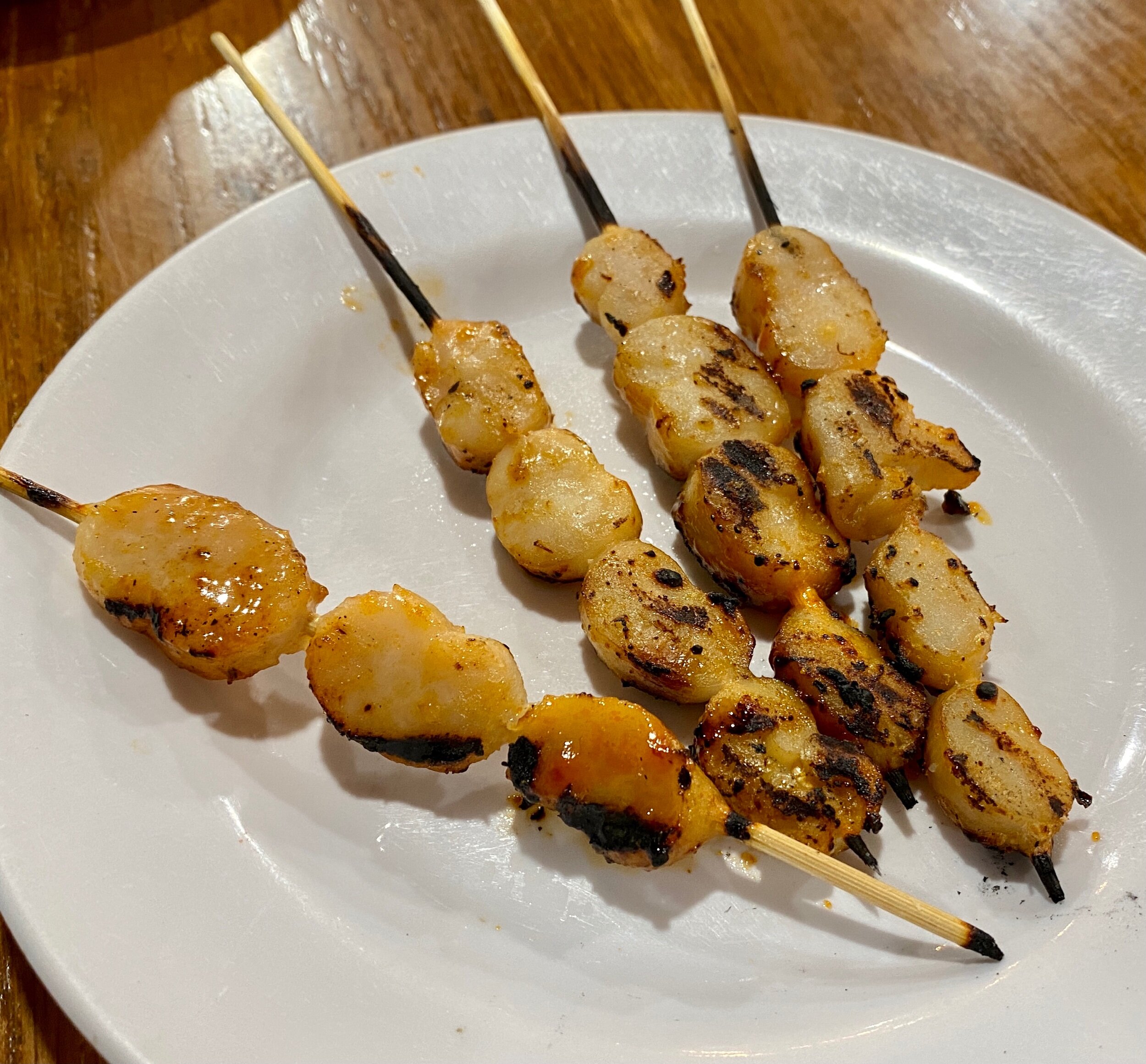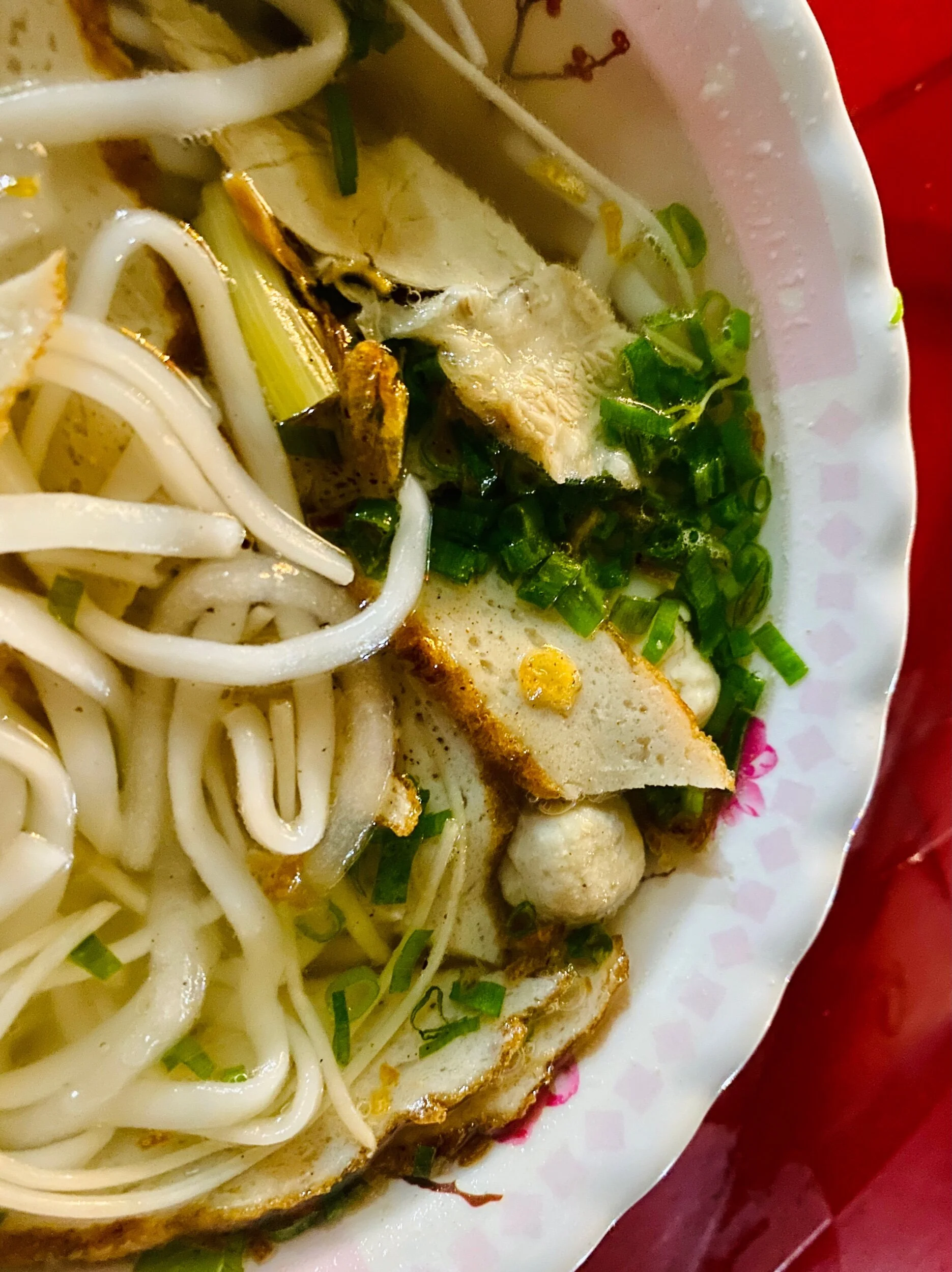Phu Quoc has such amazing food! I love seafood, so trying all the local cuisine was really a joy for me. I tried to rank them from most to least local, and rare to common. Phu Quoc has many indigenous species, in addition to more common species that would be exotic anywhere else, not to mention local styles of cooking. So, ordering them wasn’t an easy task! If you visit Phu Quoc, definitely budget for restaurants. If you are only on the island for a short time, the hands down best restaurant is Nhà Hàng Hải Sản Xin Chào at 66 Đường Trần Hưng Đạo, TT. Dương Đông, Phú Quốc.
And here’s a link to my google map of everywhere worth going on the island, including restaurants: Genevieve Fields' Phu Quoc
1. Ghẹ Hàm Ninh (Flower Crab)
Ham Ninh’s indigenous crabs, usually called flower crabs but sometimes guard crabs (a direct translation from their name in Vietnamese), are known for being particularly sweet; it’s best to choose medium sized crabs as they tend to be sweeter than larger crabs.
While I adore lobster and shrimp, I’ve never been much for crab because they’re so much work and mess for such little meat! I prefer soft shell crabs, and crabcakes. Though the Ham Ninh crab is tasty, I didn’t find its flavor special, and it was certainly nothing different enough to be “worth” the table work.
2. Canh Nấm Tràm (Boletus Mushroom Soup)
These particular mushrooms only bloom on paperbark trees in the island’s primary forest after early spring (March, April) rains. So, despite their bitter taste, their rarity makes them an expensive seasonal item. They are always cooked in a bland seafood soup with shrimp and squid. Again, I’m very pleased to have tried this local specialty but wouldn’t go out of my way for it.
3. Tôm Mũ Ni (Slipper Lobster)
Slipper lobster is yet another species indigenous to the island, and the taste and texture is sort of halfway between shrimp and lobster. In my opinion, giant shrimp are more satisfying when simply dressed and grilled, and the flavor and size of Western lobsters is far superior. However, if you’re craving more of a lobster flavor and don’t have the budget for true lobster, these are a reasonable choice. For $20 you can have 4 or 5 slipper lobsters grilled.
4. Còi Biên Mai (Horn Scallop Sinew)
Rare anywhere else, horn scallop sinews are cheap and bountiful on Phu Quoc. Though they’re called scallops, they’re actually the sinew connecting the scallop to its shell. The meat of these big triangular scallops just doesn’t taste very good, so the sinews are what’s grilled and eaten. They can be purchased for $2-3/skewer at the night market, or at beach bars frequented by locals. I love scallops and I loved these! They taste like scallops, perhaps less strong; I didn’t notice any particularly novel flavor and they could shine in many preparations. I would absolutely eat these again.
5. ốc Giác (Baler Snail)
Baler snails are giant; the meat alone is typically as large as a man’s fist. Due to their size, they have to be prepared carefully in order to not go rubbery. One of the more popular and successful preparations is thinly sliced and sautéed with onions and banana leaves. Some people prefer them grilled or boiled, and also eat the roe. For me, these were just OK. The flavor was mild, sort of mushroomy, fine but I would not seek it out again.
6. Bào Ngư (Abalone)
I’ve always thought of abalone as a shell, ideal for buttons or small household objects. I never considered eating them! They are really tasty, with a more delicate taste than clams or mussels, subtly smoky, closer to oysters but not as vinegar. The beautiful shells remaining on the dish at the end of the meal is a bonus. I would definitely order these again if I saw them on a menu.
7. Mực (Fried Squid)
I have never liked calamari, but was promised the squid here was super fresh and tender. It did not disappoint! If I go back I will try to have the egg squid, a seasonal specialty.
8. Gỏi Cá Trích (Raw Herring Salad)
Raw herring salad is possibly the island’s best known recipe, and the one I felt most apprehensive about trying. I needn’t have! Tossed with shredded coconut and wrapped with pineapple, rice noodles, green papaya, carrots, lettuce, mint and peanuts, then dipped in a slightly sweet sauce, it’s incredibly refreshing. It’s perfect for lunch on a warm day.
9. Bún Quậy (Noodle Soup with Shrimp Cakes and Squid)
This dish has been an island breakfast favorite for around 100 years. The base is white rice noodles with bland seafood broth; the deluxe version includes shrimp cakes, fish cakes, and a boiled squid for 55,000 dong, though you can order it without the squid or with just one type of cake if you prefer. The gimmick here is that you make your own sauce with soup powder, chili, msg, sugar and a squeezed kumquat, and add to your soup to taste.
10. Canh Chua Cá Bớp (Sweet and Sour Cobia Soup)
Cobia is the most popular fish on the island. It reminds me a bit of swordfish. I don’t love it, and this soup base is pretty straightforward. Meh!
11. Vỏ ốc (Conch)
One of my favorite meals of all time was in Key West over 20 years ago now, the conch at Café des Artistes. I don’t remember much about the preparation, only that it was the first time I’d tried conch, and it was absolutely delicious! Obviously a beach joint in semi-rural Vietnam is not going to share much with a truly fine French restaurant, but I was still really surprised by how little I enjoyed the conch here. It was inedibly rubbery. Is conch typically that way, or did they ruin it?
12. Nhum Biển (Sea Urchin)
Sea urchins have a rich, almost beefy taste that I love. They’re typically just grilled over charcoal with a bit of onions, oil and peanuts, though I’ve also had them with an egg fried in (an unfortunate flavor masking preparation that is used for shellfish with alarming frequency in Vietnam). There is usually a small and large size on offer, and the larger ones are meatier and have a stronger taste, which I prefer.
13. ốc Nhảy (Jumping Snail)
My pictures disguise how small these snails are! You have to pick out the meat with a safety pin, paperclip, toothpick, sharpened old chicken bone, or the like. I love eating snails, but snails this small are hard work! This type of snail is considered beer food in Vietnam and is available cheaply in the market, at roadside stands, and pretty much any restaurant. They’re typically boiled before eating. Not worth it for me, but a must try if you want to eat like the locals.
14. Bánh Canh Ca Thu (Mackerel Fish Cake Soup)
Banh canh is an ubiquitous style of Vietnamese soup with tapioca flour noodles or half rice/half tapioca flour noodles. All coastal areas will offer this soup with fish broth, and what goes in the bowl depends on the restaurant: fish balls, fish cakes, fried fish cakes, chunks of fresh fish, fried fish filets, a combo of fish cakes and pork or pork sausage, etc. This is a common lunch or dinner food, and typically costs 40,000 dong ($1.75) or less.What makes it famously good on Phu Quoc is the quality of the fish; not only can you get deluxe versions with crab or tuna, but even the cheap versions made with bits of miscellaneous fish and fish balls are relatively good. If you don’t have money to spend, you’re in a rush, or you’re looking for a homemade meal a little bit too late at night, this is a good choice.
And on my list for next time:
Tiết Canh Cua (Crab Blood Pudding)
Hải Sâm (Sea Cucumber)
Ca Thu (Grilled Mackerel)
ốc Gai (Barbed Snails)
Bánh tét mật cật Phú Quốc (Phú Quốc New Year’s Cake)
Mực Trứng (Egg Squid)
Bún Kèn (Ken Noodles)






































